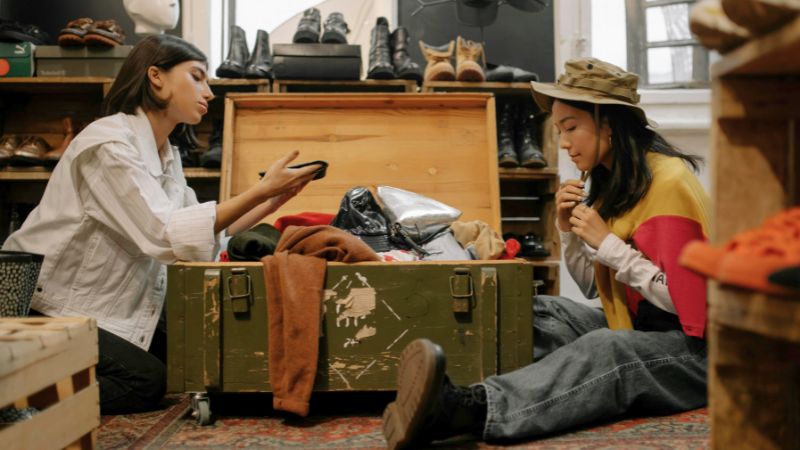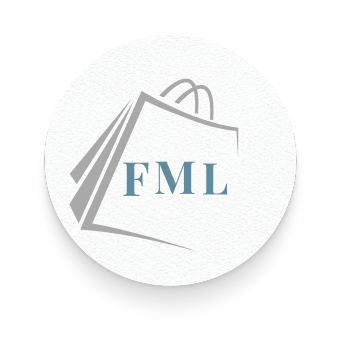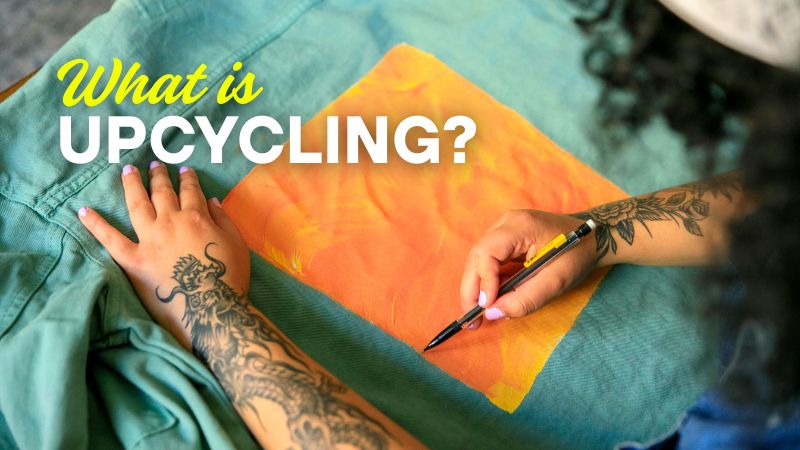Upcycling in fashion is about reusing your old discarded clothes or their materials to make new clothes. Upcycling clothes can seem to be a simple thing to do, but it can guide the future of sustainable fashion.
Whether on a personal level or an industrial level, it can save millions of tons’ worth of clothing waste generated every year.
What is Upcycling in Fashion?

Understanding Upcycling
Upcycling means taking old or discarded clothes and turning them into new, stylish items. It’s about giving used fabric a second life instead of throwing it away. People find creative ways to add patches, dye, or cut clothes to make them look fresh.
Upcycling clothes reduces waste and cuts down on the need to produce new materials. It’s a way to make fashion more eco-friendly and unique. It encourages designers and shoppers to think differently about what they wear and how it’s made.
Differences Between Upcycling and Recycling
Upcycling turns old items into something new and better. It often adds value and keeps materials in use longer. Recycling breaks down materials into raw parts, then makes new products from them.
Recycling usually uses more energy and changes the item more. Upcycling is more creative and eco-friendly because it avoids waste and less processing.
Recycling can help save resources, but it still involves breaking down and melting things. Upcycling preserves the original item’s form and reduces trash.
Essentially, both help the environment but in different ways.
The Benefits of Upcycling Clothes
Environmental Advantages of Upcycled Fashion
Over 92 million tons of clothing waste is generated in the world every year. Moreover, 11% of plastic waste is generated by textiles and clothing. The fast fashion industry is directly responsible for producing such a huge amount of waste.
However, consumer behavior is also a huge factor behind this environmental damage.
Upcycled fashion reduces waste and cuts down on the amount of trash sent to landfills. Recycling fabrics uses fewer raw materials, saving water and energy. It also lowers pollution from fabric production and dyeing.
Upcycled fashion also helps cut carbon emissions from manufacturing and shipping.
Economic and Creative Value for People
The global garment industry suffers a loss of US$500 billion every year for failing to recycle old clothes. Upcycling offers significant economic and creative benefits to individuals by transforming discarded materials into valuable products.
The process not only reduces waste but also encourages innovation and artistic expression. People can create unique items that reflect their personal style. For example, artists can create unique clothing or accessories by using old clothing materials like patches of clothes and fabric.
Many sustainable circular fashion brands are upcycling clothes at an industrial level. People can upcycle clothing too. They can save money, generate income through selling their creations, and contribute to a more sustainable environment.

How Can You Upcycle Clothing?
DIY Upcycling Techniques for Beginners
If you’re new to upcycling clothes, there are plenty of simple techniques to get you started.
1. Try basic alterations like hemming, cutting, or adding embellishments.
2. You can dye fabrics for a whole new look or experiment with embroidery and patchwork to add personal touches.
3. Simple techniques, like converting long sleeves to short or adding fringe to a denim jacket, can make a big difference.
4. With a little creativity and some basic sewing skills, you can create unique pieces that reflect your personal style.
These techniques are perfect for building confidence when upcycling while reducing waste.

Tools and Materials You May Need
Starting your upcycling journey doesn’t require a large investment in tools. Essential items include a good pair of fabric scissors, a needle and thread (or a sewing machine if you have one), and an iron.
You might also find fabric glue, safety pins, and a seam ripper helpful. For embellishments, consider fabric paints, dyes, patches, buttons, beads, or even old lace and ribbons.
The beauty of upcycling is often using what you already have with you.
How Upcycling Helps Sustainable Fashion
Reducing Waste in the Fashion Industry
As mentioned earlier, the fashion industry is a major contributor to waste, with vast amounts of clothing ending up in landfills annually. Upcycling directly combats this by preventing usable garments from being discarded.
Every item upcycled is one less item contributing to pollution and resource depletion. It encourages us to see the potential in what already exists rather than constantly seeking new purchases.
Thus, it fosters a more mindful approach to our consumption habits and significantly reduces clothing waste.
Promoting Ethical and Conscious Consumerism
When you upcycle clothing, it encourages a shift towards more ethical and conscious consumerism. Instead of supporting fast fashion’s often exploitative labor practices and environmental damage, upcycling empowers you to be part of the solution.
It promotes appreciation for craftsmanship and encourages a thoughtful relationship with your clothes. By choosing to transform and reuse, you make a conscious decision to consume less. Support sustainable practices to become more aware of the impact your choices have on people and the planet.
Conclusion
Upcycling clothes is a creative, rewarding, and impactful way to engage with sustainable fashion. From giving old garments new life with simple DIY techniques to significantly reducing textile waste and promoting conscious consumerism, its benefits are far-reaching.
By embracing upcycling, you not only personalize your unique style but also contribute to a healthier planet. And you also support a more ethical fashion industry, proving that style and sustainability can go hand-in-hand beautifully.
So, it’s your turn to save the world and the fashion industry from ever-increasing pollution.



